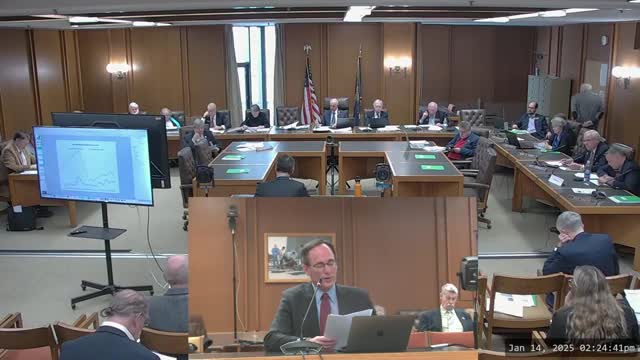New Hampshire housing permits plummet despite population surge over past 50 years
January 14, 2025 | Ways and Means, House of Representatives, Committees , Legislative, New Hampshire
This article was created by AI summarizing key points discussed. AI makes mistakes, so for full details and context, please refer to the video of the full meeting. Please report any errors so we can fix them. Report an error »

New Hampshire's housing crisis was a focal point during the House Ways and Means Committee meeting on January 14, 2025, as officials highlighted alarming trends in residential building permits over the past decades. The discussion revealed a stark contrast between past and present housing development, underscoring the urgent need for action to address the state's housing shortage.
A key presentation featured a chart tracking building permits from 1994 to 2023, illustrating a significant decline in both single-family and multifamily residential construction. In 1973, when New Hampshire's population was approximately 791,000, developers received permits for 4,554 single-family homes and 3,179 multifamily units. Fast forward to 2023, with the population now around 1.4 million, the numbers dropped dramatically to just 2,996 single-family homes and 1,500 multifamily units. This represents a troubling trend where, despite a growing population, the state is building significantly fewer homes than it did 50 years ago.
The committee emphasized that the current rate of housing construction is not only insufficient but also alarming when compared to historical data. In fact, even during economic downturns, such as the oil embargo recession in the mid-1970s, New Hampshire was still able to produce more housing than it does today. This raises concerns about the state's ability to meet the housing needs of its residents.
The committee's discussions reflect a growing recognition of the need for comprehensive strategies to boost housing development in New Hampshire. As the state grapples with a housing crisis, the implications of these findings are clear: immediate action is necessary to revitalize the housing market and ensure that residents have access to affordable and adequate living spaces. The committee's ongoing efforts will be crucial in shaping policies that address these pressing issues in the months to come.
A key presentation featured a chart tracking building permits from 1994 to 2023, illustrating a significant decline in both single-family and multifamily residential construction. In 1973, when New Hampshire's population was approximately 791,000, developers received permits for 4,554 single-family homes and 3,179 multifamily units. Fast forward to 2023, with the population now around 1.4 million, the numbers dropped dramatically to just 2,996 single-family homes and 1,500 multifamily units. This represents a troubling trend where, despite a growing population, the state is building significantly fewer homes than it did 50 years ago.
The committee emphasized that the current rate of housing construction is not only insufficient but also alarming when compared to historical data. In fact, even during economic downturns, such as the oil embargo recession in the mid-1970s, New Hampshire was still able to produce more housing than it does today. This raises concerns about the state's ability to meet the housing needs of its residents.
The committee's discussions reflect a growing recognition of the need for comprehensive strategies to boost housing development in New Hampshire. As the state grapples with a housing crisis, the implications of these findings are clear: immediate action is necessary to revitalize the housing market and ensure that residents have access to affordable and adequate living spaces. The committee's ongoing efforts will be crucial in shaping policies that address these pressing issues in the months to come.
View full meeting
This article is based on a recent meeting—watch the full video and explore the complete transcript for deeper insights into the discussion.
View full meeting
